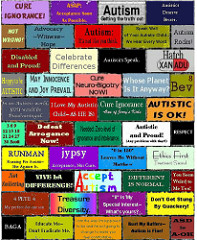Outbreaks of fully-preventable diseases are increasing
As reported on Thursday, April 11th in the UK paper The Independent, “Swansea measles outbreak: Confirmed cases rise to nearly 700″, which is worse than than last year’s outbreak in Merseyside, England.
Over 2,600 MMR vaccines were given last week, but are still insufficient to counteract the number of unvaccinated people, or those who lack the full number of necessary dosages. Public health officials explained that the outbreak will continue to grow. (This is what is meant by “herd immunity”: there needs to be a sufficient percentage of people who are immune to prevent the spread of infection.)
And as the article reminds us,
Before the introduction of the MMR jab in 1988, about half a million children caught measles each year in the UK. Approximately 100 of those died.
But for reasons I don’t understand, Andrew Wakefield (who apparently suffers from ‘Center of Attention Deficit Disorder’*), was not just mentioned as a historical reference, due to being a pivotal figure in the paranoia that led to the drastic drop in immunisations. The front page of The Independent’s online edition for Saturday, 13 April 2013, has in its top, featured article a large photograph of him, “Struck off MMR scare doctor: Welsh measles outbreak proves I was right“. What in the world for?!
Why the concern over Wakefield’s opinions being published, with a newspaper’s front-page lead?
Andrew Wakefield should not be a featured person of interest for opinions. He is no longer a licensed doctor in either the UK or the US. In 2011, Medscape designated him “Worst Physician of the Year” and in 2012, Time listed him in, “Great Science Frauds”. There is also a good editorial in the same edition of The Independent, “Andrew Wakefield’s baleful legacy”.
Wakefield’s unprofessional behavior as a researcher and false assertions that MMR vaccines can lead to autism (in a 1998 article in The Lancet, later withdrawn by the journal) are a bunch of frass (insect dung). Plus, his ongoing media attention and involvement with what initially were fringe groups, inflated such ‘antivax’ sentiments to mainstream popularity.
Vaccination rates dropped drastically, from 92% to as low as 50% in some areas. Measles outbreaks began occurring across Britain, and in 2006 for the first time in 14 years, someone died of this preventable disease.
(Similar outbreaks happened in the US as well, including mumps. In 2006 got an MMR vaccine then because I had never had mumps, nor been vaccinated for it. Even if I had, the old killed-virus mumps vaccine used when I was a child was found to be ineffective.)
Included in The Independent’s series of articles is the useful, “Timeline: How the MMR scare story spread” by Jeremy Laurance.
The feature article: the good, the bad, and the problematic
The front-page feature by Jeremy Laurance is titled, “Struck off MMR scare doctor: Welsh measles outbreak proves I was right”. Which of course, is not true; Wakefield is just bloviating again**. As the front-page subhead reads, “Experts condemn discredited doctor’s outburst pinning the blame for the outbreak of measles in Wales on the Government as cases in the Swansea area rises”.
The linked article posted in the Health News section has a different title, “MMR scare doctor Andrew Wakefield breaks his silence: Measles outbreak in Wales proves I was right” (subhead: “As measles cases rise, experts condemn Wakefield’s outburst”), which begins with with six paragraphs of current events, then describes Wakefield’s assertions in the next eight paragraphs.
BUT, the factual counterpoints to the nonsense, clearly stated by, Adam Finn, paediatrics professor at University of Bristol, and childhood vaccines expert, are not given until afterwords, in the next nine paragraphs of the article.
Unfortunately, not everyone is going to read that far, nor stop to digest the complete refutation of all the idiocy that Wakefield said.
I think Finn’s factual material would have been more useful if presented earlier, such as a point-by-point dismissal of nonsense, e.g. ‘Wakefield claims … but Professor Flinn refutes …’
Alas, perhaps due to following the common news formula of, So-where’s-he-working-now, included this last paragraph, which unfortunately lends him what some might perceive as professional credibility:
“Dr Wakefield moved to Texas, US, in 2001 where he is director of Medical Interventions for Autism and in January was promoting a reality TV series on autism.”
Remember, Andrew Wakefield uses the title “Doctor” because he earned a degree in medicine; he is not licensed to practice medicine in either the UK or the US.
As I said, Wakefield should remain a historical warning, rather than a featured person of interest for opinions. Adding on the reasons why his comments are harmful nonsense at the end of an article are not enough to detract from the fact that all this frass is featured for free!
_____
* I didn’t make up the (fictional) COADD — ‘Center of Attention Deficit Disorder’, but I sure see a lot of it in our problem students (as opposed to the students with problems, who generally want to avoid being in class).
** Bloviating: a lesser-known, but useful addition to one’s vocabulary: to speak boastingly, pompously, aimlessly; as the OED says, “talk at length, especially in an inflated or empty way”









You must be logged in to post a comment.